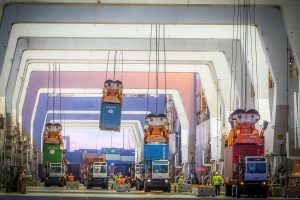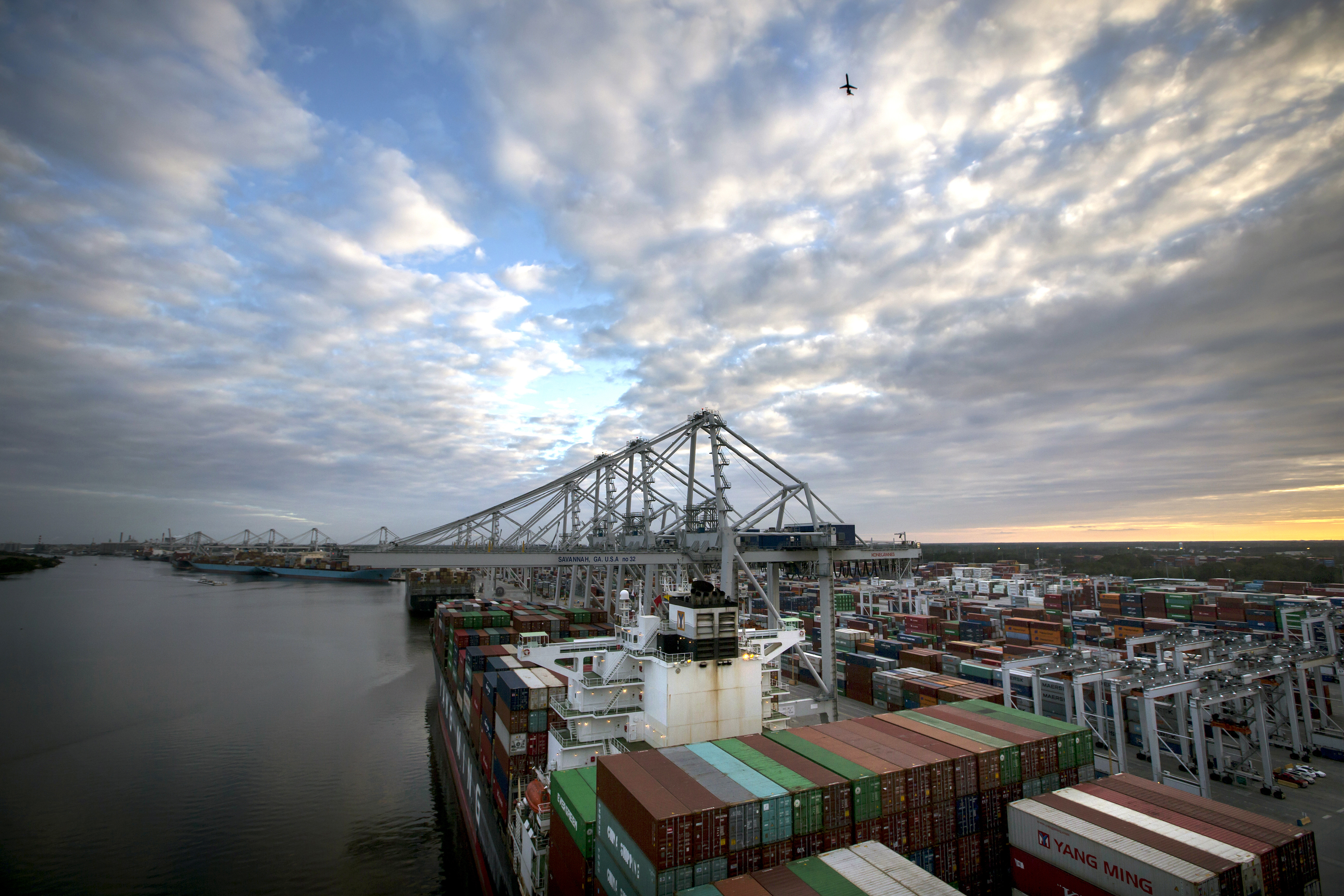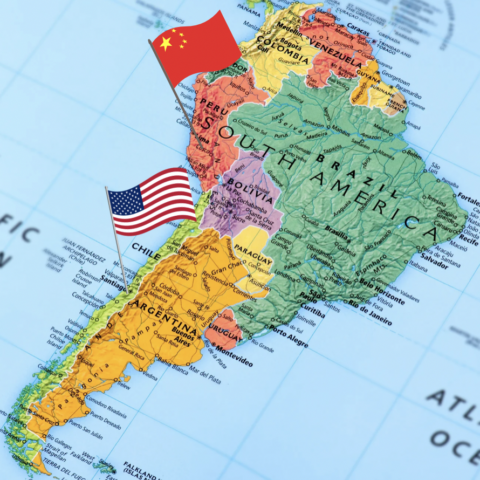@TheVandenHeuvel
The author would like to thank the Terry College Associate Dean for Research and Graduate Programs, Dr. Marisa Pagnattaro, and the Georgia Ports Authority for information related to this article.
The Port of Savannah is not the sort of divisive issue that drives political discourse like abortion rights or immigration laws, but it has become one of the most important- and perhaps one of the least thought about- topics in Georgia politics as of late.
The importance of the port as a principal trading point cannot be understated; the port of Savannah is the fourth busiest port in the United States, behind only Los Angeles, Long Beach, and New York-New Jersey. When it comes to strictly exports, Savannah is the second busiest port in America; a little more than 10 percent of all exports in the United States leave through the port.
When put in numbers, the impact of the port of Savannah on Georgia’s economy is indispensable. The port set a record for volume growth, moving almost 300,000 twenty-foot equivalent container units (TEUs) in the month of December, which was a 12 percent growth from December 2015. A 2014 fiscal year report from Terry College indicated at the time that collectively, the ports at Brunswick and Savannah created around 370,000 jobs, added $33 billion to Georgia’s GDP, and created about 5 percent of the Georgia workforce’s total income; these figures now are likely even higher now.
It’s not just the Atlanta metro area that relies on the port either: nearly 40 percent of Georgia’s chicken exports, primarily from south Georgia, are exported through the port of Savannah. This is particularly important since more demand for chicken is expected from the Caribbean, especially Cuba, as relations thaw. That chicken exporting point might seem silly, but it is actually highly beneficial for the parties involved. A lot of those exports to the Caribbean represent dark chicken meat, which is not usually eaten by Americans, as well as what is referred to as “chicken parts”. “Chicken parts” include the feet and other parts of a chicken that Americans also do not eat, and the parts are shipped to East Asia, where countries like China have a huge demand for them in many highly sought after dishes.
The port is also experiencing the beginning of a huge windfall from the recent expansion of the Panama Canal.
It is not just chicken. What many people consider as Georgia’s classic industries rely heavily on exportation through the port of Savannah: carpets, wood pulp, cotton, peanuts, aviation exports, and non-electrical appliances.
The port itself is an interesting historical artifact. It was created in 1744 and was one of colonial America’s largest ports. It boomed and busted as wars, fires, and droughts came along and passed, mostly because the port largely depended on income from the cotton trade. After the Second World War, the port began to prosper as Georgia grew to be of the most diverse and populated states in the country, and the port has long been considered part of the old historic part of Savannah.
The interesting politics surrounding the port have come during the discussion of how to properly manage the port. While Los Angeles, Long Beach, and NY-NJ are multi-terminal, Savannah is still single terminal. Furthermore, there have been efforts for almost two decades to expand the port itself, which desperately needs to be deepened and made larger generally to accommodate the ever growing size of ships coming through. These extensive projects, along with the development of a rail system connecting to the port, are deliberate attempts on the part of the Georgia Ports Authority to make Savannah as attractive as possible in a world with constant competition, where small differences can mean importing something through Savannah as opposed to Charleston or Norfolk. Everyone involved wants the port to succeed, but there are definitely different beliefs on how to make it succeed.

Dredging a harbor is no walk in the park. The U.S. Army Corps of Engineers has been working on one of the two dredging projects in Savannah for nearly a year and a half now, according to a press release from the Georgia Ports Authority.
“Sept. 10, 2015, marked the official start of construction on the Savannah Harbor Expansion Project (SHEP) when the 300-foot Great Lakes Dredge & Dock vessel, The Alaska, began work to deepen Savannah’s outer harbor to 49 feet at mean low water,” the release said, “The initial $134.5 million dredging contract issued by the Corps of Engineers covers deepening the outer harbor from the mouth of the Savannah River for 18.5 miles into the Atlantic Ocean. A later contract will deepen the inner harbor to 47 feet at low tide (54 feet at high tide).”
The release also mentioned another sticking point that some have over port expansion: the cost. Deepening miles of ocean floor by several feet is not cheap. While most politicians understand that the port is crucial for the Georgian economy, some of the fiscally conservative members balk at the cost incurred by ongoing port development, especially when locally raised funds are being used. This is essentially a classic “Tragedy of the Commons” problem that basic economics classes cover. Everyone benefits from the port, but no one wants to to pay for the port; especially us notoriously tax averse Georgians.
“Georgia has devoted $266 million to cover the state’s projected SHEP costs. Federal funds will cover the remainder of the $706 million total.”
The cost of the renovations has been a frequent battle, where the federal government often has been reluctant to commit the amount of money deemed necessary for the project, much to the chagrin of Georgian political figures. Further costs have been incurred by plans to improve the rail capacity of the Garden City Terminal, which serves as an expansion to the port; port terminals effectively function in a way similar to additional terminals at an airport. More ships can load and unload, and they serve as an additional access point for goods.
“Key to expanding rail service is a $128M project linking Garden City Terminal’s two rail yards.

The project, dubbed the Port of Savannah International Multi-modal Connector, will allow GPA to build 10,000-foot long unit trains on terminal without disrupting nearby traffic,” a November press release from the GPA said, “Set for completion in 2020, the rail expansion will improve efficiency and grow terminal rail lift capacity to approximately 1 million containers per year.”
The rail expansion will allow Savannah to further compete in the Midwest, where the port is becoming desirable for businesses in cities like Chicago and St. Louis, and the port is quickly taking a chunk out of the market share from the Port of New York-New Jersey. While the expansion is definitely intriguing, its cost is not one that can be shrugged off. According to a press release from January 5, the project is set for completion in 2020 and will be funded by a $44 million grant from the US Department of Transportation and also through $84 million of local matching funds.
Another question remains: how do Georgians adapt to the growth of the port and the changes it brings? With increased international trade, the problems faced by the smuggling of humans and goods increases. Last year, fake pain pills imported through the port from China resulted in deaths. Counterfeit goods, which undercut legitimate business, are becoming an increasing problem on Georgia markets. Drug imports are becoming increasingly pervasive and difficult to detect. For example, the CBP (U.S. Customs and Border Protection) seized 350 pounds of cocaine during a single incident last March. The cocaine, valued at over $6 million, was hidden in a container of frozen pineapples coming in from Costa Rica. For the past three years, the Port of Savannah has been the leading American port in the exportation of shark fins. They are used to make shark fin soup, which is a delicacy in many parts of Asia. The shark fin trade is highly controversial, and deemed by most environmental groups to be both extremely damaging to the environment as well as highly inhumane.
Many of these problems are difficult to address. The CBP is responsible for screening imports using advisement from the FDA, and holds the power to reject anything in customs that does not meet standards. But when millions of TEUs are moving through each month, not everything can be caught. Every time a ship or cargo is searched, everything slows down, which is the opposite of what business owners want.
In a way most of these problems are traced back to ongoing conflicts between American and Chinese companies involving intellectual property laws and trade secrets. While frequently offending countries such as Taiwan, China, Vietnam, and India have been gradually improving over time in regards to enforcing agreed upon intellectual property laws, there is still a lot to be desired and it remains an extensive problem, ranging from the production of large cranes to cars to toasters. The political undertones of intellectual property fights came to a head in the past election cycle; President Trump’s shift in American policy towards China, along with tariffs he has proposed, leave the development of the port up in the air, along with many things regarding American trade in global markets.
All things considered, the port is rapidly becoming known for its mechanical efficiency. A press release from January 18 stated that “The terminal is equipped for the influxes of cargo from New Panamax vessels, with 26 ship-to-shore cranes and 146 rubber-tired gantry cranes – more than any other U.S. terminal,” with plans to expand to 30 ship-to-shore cranes by 2018. The port also has another advantage in that it directly feeds into the highway via the recently completed Jimmy Deloach Connector, whereas many ports, such as Long Beach, NY-NJ, and Charleston require at least some amount of travel through their respective cities and dense traffic. According to the January 18 release, the connector cost the state a $100 million bond in 2011, but is expected to return an 8:1 yield in terms of benefit to cost. The port has developed a reputation for remaining consistent in busy seasons, whereas other ports suffer exponentially increased turnover times.

The implications of the facts invoked here are clear. Infrastructure development will always pay off if it is carefully thought out and well executed; it also creates more jobs in itself, along with the jobs created by strengthening the port. From all appearances, the spending on the port and surrounding area has led the port to a strong position, and it would be a shame to stop now. While it is undeniably expensive, it would not pay off to stop before the peak of its potential. By that point the benefits of developing the Port of Savannah will be abundantly clear. If anything, the state should forge ahead with even more spending with funds raised from across the state. The entire state benefits from having a strong port, not just the city of Savannah. Along with aiding the development of industry across the state, the port encourages business development, and can play a huge role in the future of our state.
While there are certainly many issues involved in the politics of the port, consider these questions:
- What role should Georgia play on the global trade market?
- How should infrastructure in Georgia be managed and paid for?
- How will Georgia adjust to the challenges and benefits that global trade brings?
The Port of Savannah lies at the heart of these difficult questions, and will undoubtedly remain there for decades to come.


